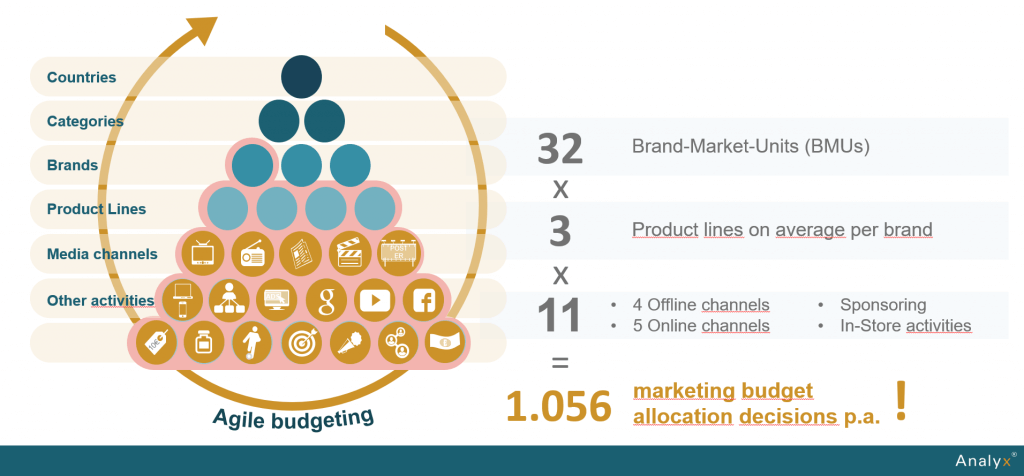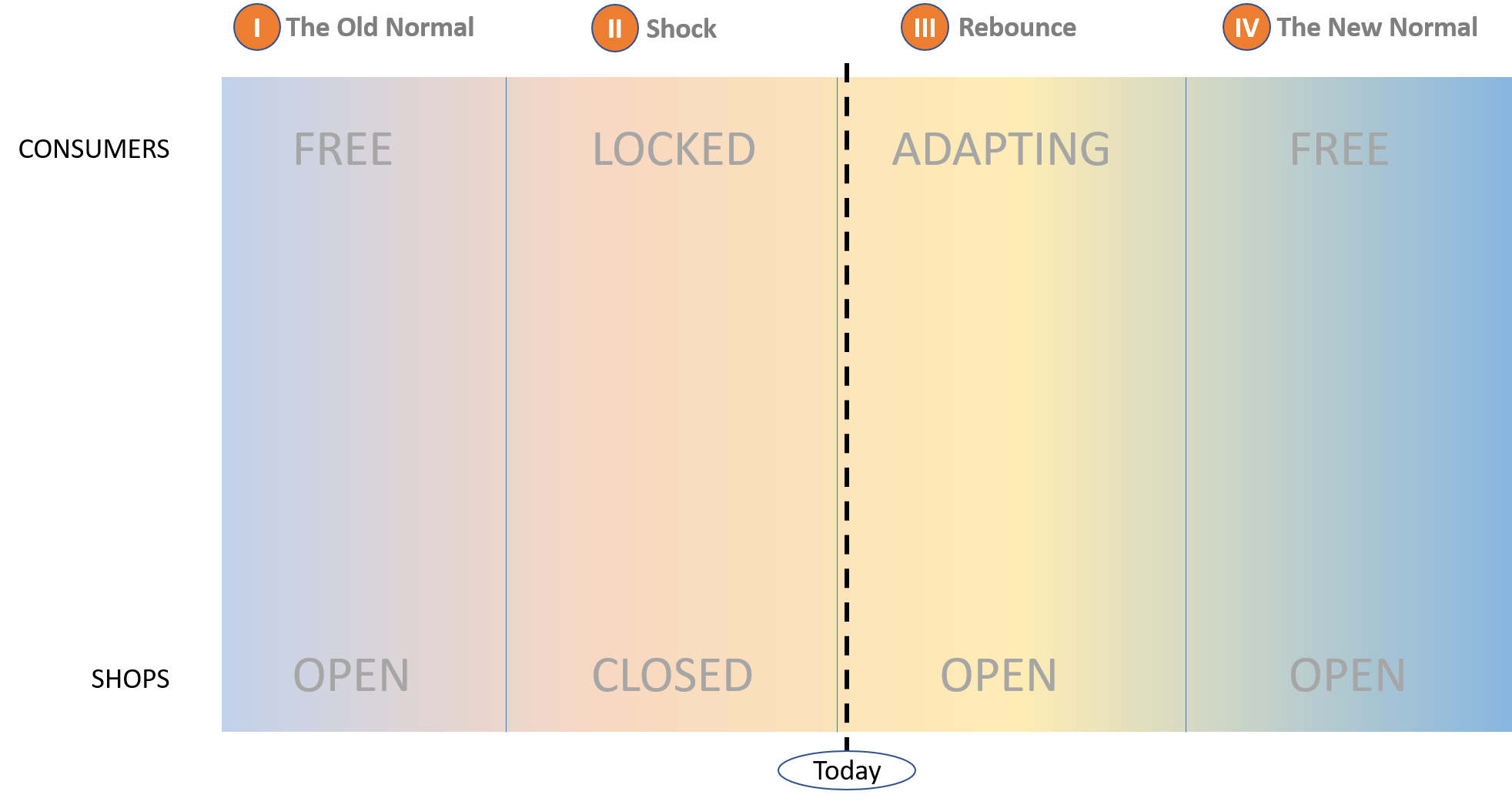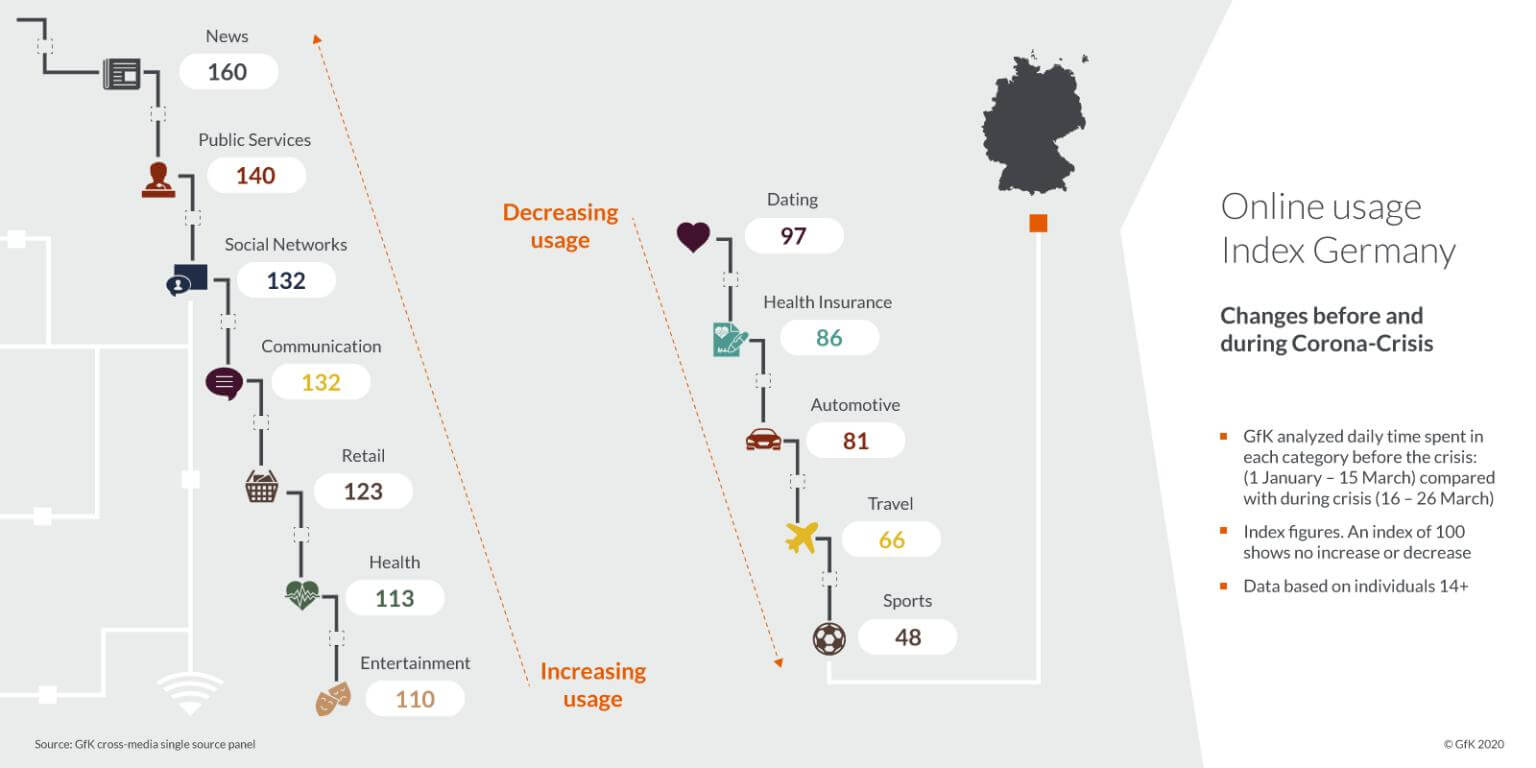Zero-based budgeting
#ZBB means tabula rasa for every new planning period. The budget for each allocation unit (e.g. brand x product line x media channel) has to be regularly justified. Doesn’t sound like fun, right? But when implemented well and done continuously, ZBB has a profound bottom-line impact – McKinsey has measured this globally.
Not surprisingly, ZBB has gained traction especially in times and in companies where marketing budgets are under scrutiny. A number of Analyx clients have introduced zero-based budgeting in Marketing or are deliberating it. Here are some tweets from the frontline…
So many decisions, so little time
Most clients were astonished once they mapped out the “playing field”. In other words: How many budgeting decisions would need to be made from scratch every year under the new regime?
“If we wanna be serious about ZBB we need to justify the budget for 1.056 allocation units every single year.”
— Head of Marketing Controlling, FMCG
Given the number of brands this specific company advertises in the pilot country and the fact that not only traditional media would be included in the exercise, the number of required decisions adds up quickly:

The challenge in such a situation is to have a system in place to support that, i.e. keeping track of historic budget decisions and WHY they were made.
Learning 1: Companies need solid processes and supporting tools in place when introducing ZBB. The old ones might not do.
So, why the hassle?
1000+ decisions, processes, tools – that’s a lot of work. The companies I met that successfully mastered it differed from the ones that didn’t sustain it by following two principles:
- ZBB is not about forcing the organization into an annual justification battle but to aim for an allocation that is is maximizing return on Marketing Spendings. Sounds obvious but often isn’t.
- The tools companies need for ZBB give them another edge: Agility! Those marketing organizations, which have the backup numbers in place that help explain WHY a certain budget is optimal, are also better prepared to respond fast to changes in marketing effectiveness and adjust during the year (see our recent Blog post on #AgileBudgeting)
Learning 2: Understand ZBB as a vehicle to maximize ROI and agility, not as an ankle cuff.
Step 1 before going Zero
Another key challenge during the introduction of ZBB is often a missing ingredient: a solid understanding of the relative effectiveness of the marketing investments in each allocation unit. In other words: An understanding of the return on marketing dollars for each combination of brand x product line x channel in the country. Without that there is no answer to WHY you are allocating a certain amount.
“ZBB told us for good reasons to do tabula rasa every time we plan. But this means we can’t do convenient things like ‘same budget as last period or +/-x%’ anymore…and that’s a good thing!” — CMO, Consumer electronics
Some clients I talked to started their first ZBB cycle by applying industry benchmarks or simple models available in-house or via 3rd parties. Later, more sophisticated econometric modeling was applied to gain deeper and customized insights dynamically recalibrated every quarter (read more here). But the important learning is:
Learning 3: ZBB can be your best friend (and a true step change in driving #MROI) but you need to compile your basics (=reasons why) first and let budgeting process change come second.
#ZeroBasedBudgeting #ZBB #AgileMarketing #Agility #AgileBudgeting



 Source:
Source: 